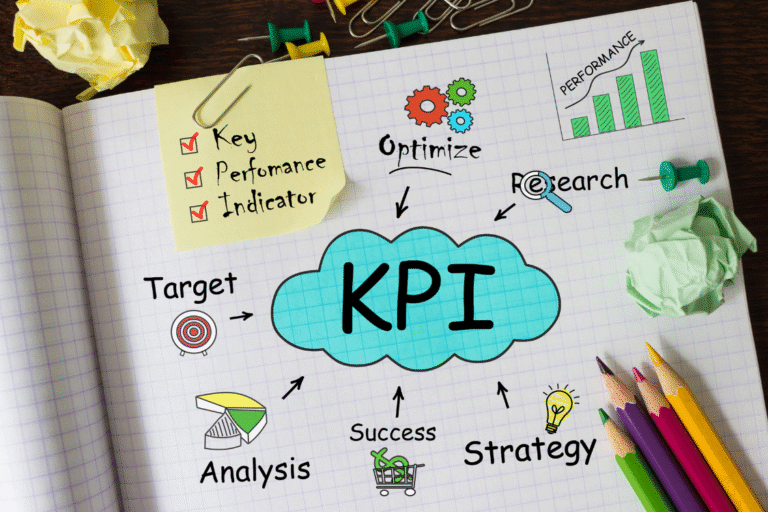Identifying qualified leads for business sale means focusing on buyers with real purchase intent instead of anyone who asks for your numbers.
By treating qualified leads, listing date, and active offers as core KPIs, your sales team can spend less time on tire-kickers and more time on hot leads who are closer to being sales-ready. Simple tools like BANT, lead scoring, and light lead nurturing give your sales reps and marketing team a repeatable sales process instead of reacting to every sales lead that comes in from lead generation or content marketing.
What Makes a Qualified Lead?
A qualified lead is a potential buyer who appears to have the money, experience, and intent to buy your company within a realistic timeframe.
That buyer can support their interest with documents, a basic plan, and answers that fit your company’s product, company size, and market. When you focus on these qualified leads, your sales funnel holds more realistic paths to qualified sales instead of long lists of unqualified leads who rarely become paying customers or prospective clients.
Defining Proof of Funds and Industry Experience
Proof of funds and industry experience show whether a potential buyer can likely afford and run the business.
Proof of funds usually means a bank or brokerage statement, SBA prequalification, or a written capital commitment from a search fund—enough lead information for your sales representatives to see if a prospective customer is serious. Industry and operational fit matter too: buyers with similar revenue exposure, headcount, or regulated-industry experience often understand your pain points, existing customers, and day-to-day demands better. Before sharing sensitive customer data, require a signed NDA so only genuinely interested potential buyers move to further qualification.
As Aktas and Boone note in their work on the private deal process in mergers and acquisitions, much of the competition and negotiation happens privately (Aktas & Boone, 2024), which supports tightening proof-of-funds checks and information controls with potential customers.
Why Serious Leads Matter More Than Quantity
Serious leads are more valuable than a long list of casual inquiries.
High-volume but weak leads burn sales efforts, slow negotiations, and increase the risk of leaks inside your company website and team. Tracking only verified sales-qualified leads that meet certain criteria gives sales leaders a more accurate view of sales performance and shows why sales-qualified leads important to your pipeline are the ones who actually fit, not just the ones who shout the loudest.
Examples of Qualified vs Non-Qualified Inquiries
Qualified inquiries share clear proof of funds, fit, and timing, while non-qualified inquiries avoid specifics.
Qualified buyers usually offer early proof of funds, show industry alignment, ask about custom pricing, and reference your marketing materials or content marketing in a way that proves they read them. Non-qualified buyers give vague budgets, dodge timelines, refuse NDAs or proof of funds, or push for full financials and sensitive customer data before providing basic contact data. Those patterns signal unqualified leads, not promising leads.
Quick Proof of Funds Checklist
- Dated within 30 days
- Bank or brokerage statement
- SBA prequalification letter
- Search fund capital commitment

Step 1 – Establish Clear Qualification Criteria
Establishing clear qualification criteria helps you separate new leads from real opportunities fast.
Shared qualification criteria keep your sales and marketing teams aligned and give everyone a common filter for qualified leads for business sales. When marketing and sales teams agree on what “qualified” means, it’s easier to see which potential customers should move forward and which new leads stay in low-effort follow-up.
Financial Thresholds and Documentation
Financial thresholds and documentation help you judge if a buyer can likely cover the full purchase, not just the deposit.
Many lenders expect buyers to have 20–30% liquid cash for SBA loans and enough cushion for living costs. Asking for recent statements, lender prequalification letters, or proof of equity partners helps you score leads based on documented funding so your sales team doesn’t invest hours in buyers who are unlikely to get approved.
Industry and Operational Background
Industry and operational background show how steep the buyer’s learning curve will be after closing.
Look for past P&L responsibility, key licenses, compliance history, and team-leadership experience that matches your company size. Professional buyers like search funds and small PE groups can also share an investment thesis that shows whether your business matches their sales strategies and how close they are to your ideal customer profile.
Timeline and Motivation Filters
Timeline and motivation filters reveal where buyers sit in the buying cycle and how serious they are.
A target window of 90–150 days, plus clear motivation—owner-operator vs roll-up—can signal real purchase intent and work already done with lenders and advisors. Only buyers who sign an NDA and complete a simple intake form (name, job title, role, funding mix, target close date, 12-month plan) should move into deeper review.
As Marvasti et al. explain in their study on estimating stages of the B2B buying journey, knowing the buying stage of a potential buyer gives the seller a substantial advantage in complex deals (Marvasti et al., 2021), which supports using timing and intent as core filters in your buying cycle.

Step 2 – Ask the Right Vetting Questions
Asking the right vetting questions helps you quickly confirm who is truly qualified and who is not.
Strong questions cut through small talk and keep each sales conversation focused on fit, funding, and timing—core to lead qualification and smart sales strategies.
Examples:
- “Can you share proof of funds sufficient for a [$X–$Y] acquisition?”
- “Describe your operational plan for the first 90 days.”
- “What’s your timeline and who else must approve?”
- “How have you acquired or led a team of [N] employees before?”
- “What lender will you use? Have you spoken with them yet?”
Buyers who answer clearly, match your model, and speak thoughtfully about staff and existing customers are more likely to become sales-qualified leads than those who give vague answers.
What to Look for in Buyer Responses
You look for answers that are specific, documented, and connected to your business. Signals of a stronger prospective customer include recent proof of funds, a named lender, relevant references, a realistic 90-day plan, and basic familiarity with SBA steps. These patterns suggest promising leads that could become sales-qualified leads SQLs, not just another record in your CRM.
Red Flags That Signal Low Intent
Red flags show you when to pause or stop before investing more time. Common red flags include:
- No proof of funds
- Evasive answers on timing
- Pressure for full financials before the NDA
- Early demands for owner financing or unusual access.
A quick two-minute call often confirms whether a buyer belongs on your list of hot leads or in a “not now” bucket.

Step 3 – Use Tools to Track and Score Leads
Using simple tools to track and score leads helps you see which buyers are closest to being sales-ready.
A basic spreadsheet or CRM can organize lead information from lead generation, website activity, and direct contact, so you can see where each sales lead sits in the sales funnel.
Simple Spreadsheet or CRM Templates
A simple CRM template keeps all lead details in one place for the sales and marketing teams. Track name, company type, budget, proof-of-funds date, industry fit, timeline, intent notes, NDA status, score, and next step. Connecting your CRM to marketing automation lets marketing efforts (forms, downloads, content marketing, website activity) roll into one record, improving sales outreach and the overall decision-making process.
How to Give Each Lead a Qualification Score
You give each lead a qualification score based on funding, fit, timing, and engagement.
Example 0–100 model:
- Budget / proof of funds (0–40)
- Industry / operator fit (0–25)
- Timeline readiness (0–20)
- Engagement quality (0–15)
Leads scoring 70+ are “Qualified,” 50–69 are “Nurture,” and below 50 are “Decline.” Over time, you can score leads based on extra factors like company size, staff fit, or whether they came from trusted business contacts instead of a cold channel.
Automating Reminders and Follow-Ups
Automation keeps good leads warm without overwhelming your sales reps. Use CRM tasks at 3, 7, and 14 days, and only count 70+ scores in your weekly KPI reports so you track more qualified leads, not every name ever added.
Integrations with tools like Sales Navigator, basic email sequences, and account-based marketing campaigns help turn Marketing Qualified Leads (MQLs) into Sales Qualified Leads (SQLs) and ultimately more sales.

Step 4 – Manage and Prioritize Qualified Leads
Managing and prioritizing qualified leads ensures your best buyers get your best attention.
Clear rules for handling new leads, nurturing leads, and high-score qualified leads help your sales representatives and sales leaders keep the customer experience consistent from first call to closing.
Creating a Lead Funnel That Works
A simple, structured funnel reduces mistakes and protects sensitive information. Common stages include New → Screened → NDA → Proof of Funds Verified → CIM Sent → Q&A → Site Visit → Letter of Intent. Following this sequence protects customer data, keeps your sales process ordered, and makes it easier to train new people as you win new business.
When to Hand Off Leads to Advisors or Brokers
You hand off leads to advisors or brokers once fit and proof of funds are clear.
At that point, advisors can run diligence calendars, manage document requests, refine custom pricing, and support lenders—freeing you to keep sourcing new leads that match your ideal customer profile.
Balancing Follow-Ups Without Overwhelming Buyers
A light, steady follow-up rhythm keeps prospects moving without feeling chased.
Example cadence:
- Week 1: Thank-you, NDA, proof-of-funds request
- Week 2: CIM access + 3–5 priority questions
- Week 3: Call or site visit window + open pain points
- After 10 business days of silence: one polite break-up email
This rhythm works for both smaller deals and account-based marketing plays and supports better sales performance over time.

Step 5 – Drop the Time-Wasters Gracefully
Dropping low-intent leads frees capacity for the most promising leads.
Saying no to buyers who never send documents or commit to a timeline keeps your sales team focused on qualified leads, hot leads, and prospective clients with real purchase intent.
How to Say No Professionally
A short, polite script closes the loop without burning bridges.
For example:
“Thanks for the interest. At this time, we’re proceeding with buyers who have provided recent proof of funds and a clear 90-day plan. If your situation changes, reply with documentation and timeline, and we’ll revisit.”
Keeping Communication Concise and Respectful
Short messages help you exit conversations without getting pulled into debates.
Three lines are usually enough to share your decision, reason, and a path back. Log the decline reason so you can refine lead generation channels and sales strategies if certain sources send too many unqualified leads.
Freeing Your Time for More Serious Inquiries
Tag and archive low-intent leads so you can spend time on the most promising leads. Labels like “No Proof of Funds” or “No NDA” keep your active list clean, while high-score leads with strong website activity, engaged sales conversation, and clear lead information stay front-and-center. Over time, this focus helps you build more qualified leads, stronger qualified sales, and a smoother path to closing.

Focus on the Leads That Matter
In practice, strong qualification usually matters more than sheer volume. Your weekly KPI tracker and clear score thresholds can help you see which buyers are closer to ready and which ones seem to slow the deal or drain your energy. When you rely on simple tools, clear qualification criteria, and a repeatable way to handle both hot leads and dead ends, you can stay focused on potential buyers who are more likely to close and carry your business forward. Download the Lead Score Sheet + Screening Scripts to tighten your sales process, support your sales team, and move toward more confident, qualified sales.
Frequently Asked Questions
What is a qualified lead in a business sale?
A qualified lead is a buyer with verified proof of funds, a strong fit for your business, and a score of around 70 or higher on your chosen lead scoring model.
How do I verify a buyer’s proof of funds?
Request recent bank or brokerage letters dated within 30 days, or an SBA prequalification that aligns with the expected deal size.
What questions help vet a business buyer fast?
Ask about their budget source, 90-day plan, timeline, decision makers, and how far along they are with their lender.
How many qualified leads do I need before selling?
Track this weekly, and if you have several strong buyers and no offers, consider reviewing your price, positioning, and overall sales process.
How do I politely decline a low-intent buyer?
Use a short script that thanks them, explains you are moving forward with higher-score leads, and invites them to return with proof of funds and a clear plan.
Reference
- Aktas, N., & Boone, A. (2024). The private deal process in mergers and acquisitions. In Economics 2024 (pp. 323–344). Edward Elgar Publishing. https://doi.org/10.4337/9781800373891.00016
- Marvasti, N. B., Huhtala, J.-P., Yousefi, Z. R., Vaniala, I., Upreti, B., Malo, P., Kaski, S., & Tikkanen, H. (2021). Is this company a lead customer? Estimating stages of B2B buying journey. Industrial Marketing Management, 97, 189–205. https://doi.org/10.1016/j.indmarman.2021.06.003




